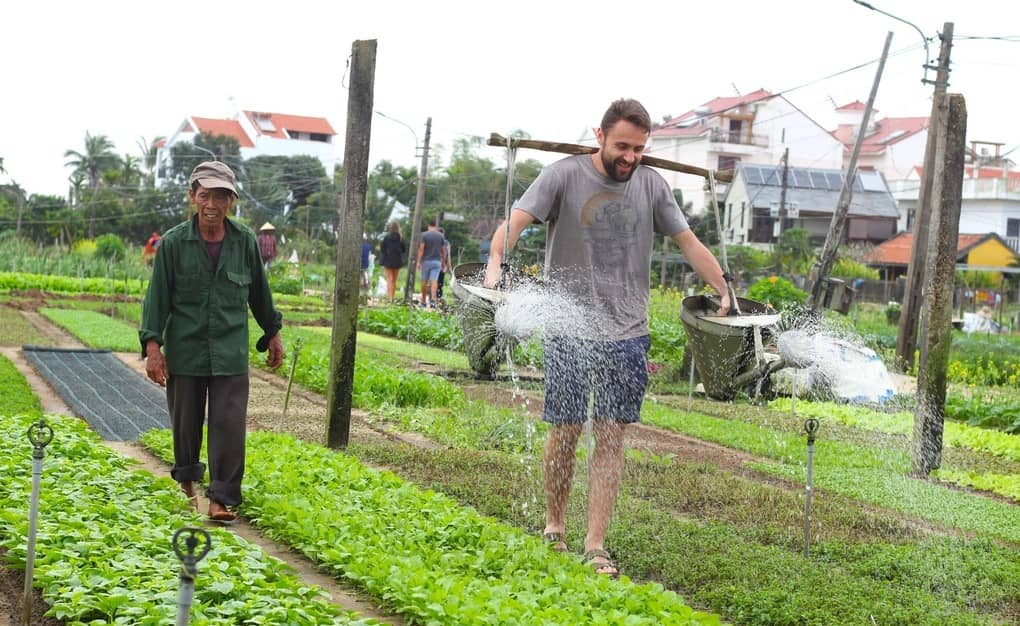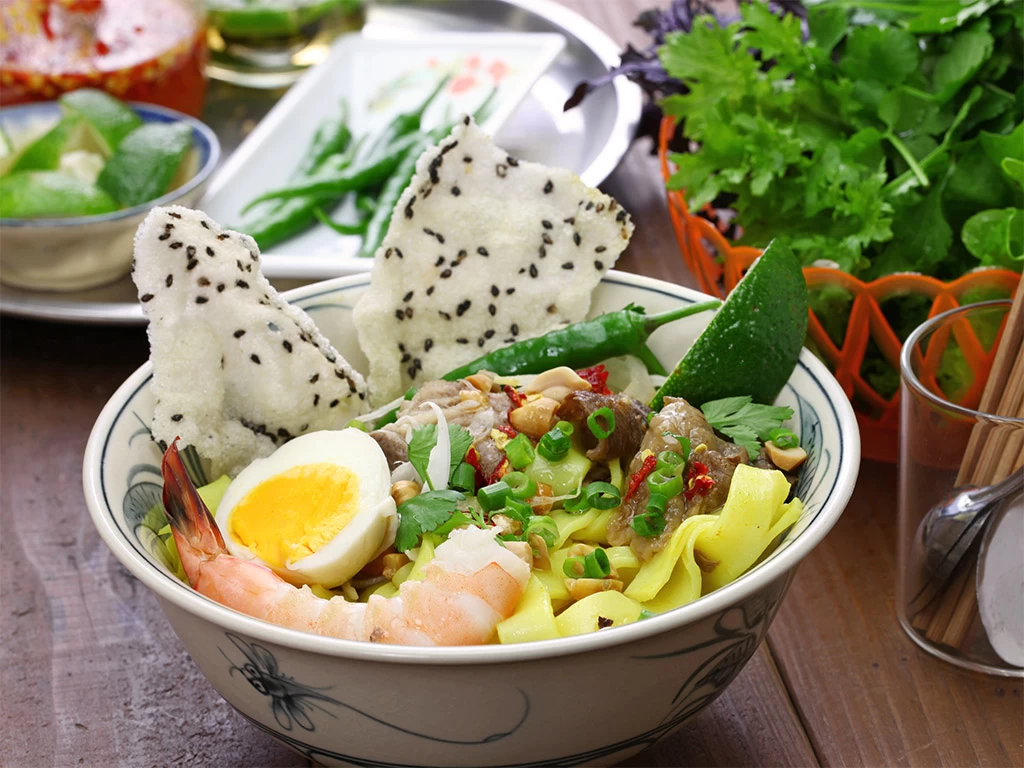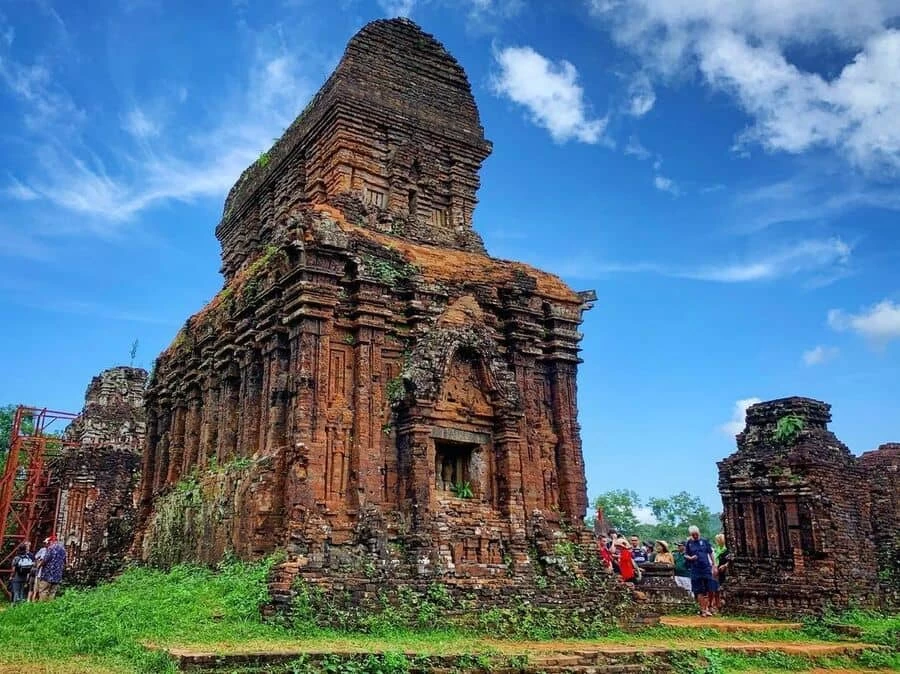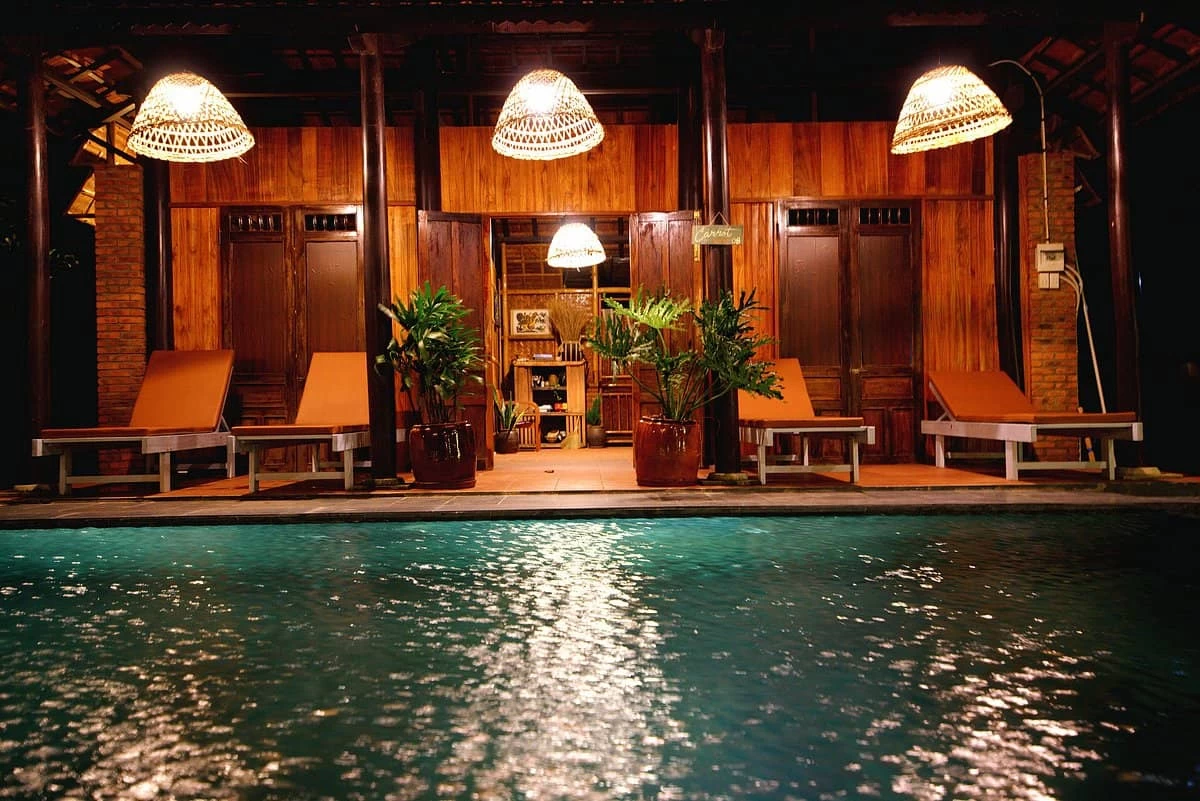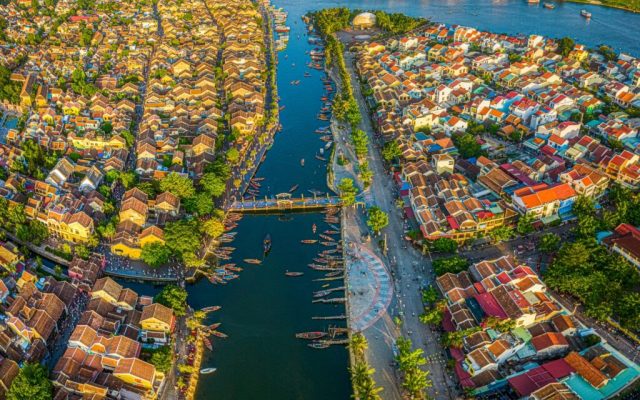
Let’s explore Hoi An attractions
Explore the top Hoi An attractions! Delve into the charm of the ancient town, visit iconic landmarks like the Japanese Covered Bridge, relax on An Bang Beach, enjoy vibrant night markets, and savor the local cuisine. Discover why Hoi An is a must-visit destination for travelers from all over the world with Ula Travel’s complete guide.
I. Overview of Hoi An
1. A Brief Introduction to Hoi An
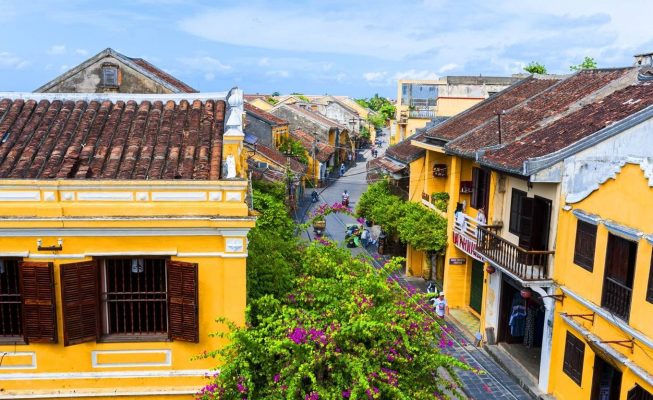
Hoi An-a UNESCO World Heritage Site
Hoi An is a picturesque town located on the central coast of Vietnam, about 30 kilometers south of Da Nang. Known for its well-preserved ancient town, Hoi An is a melting pot of history, culture, and charm. The town is a UNESCO World Heritage Site in Vietnam, recognized for its unique blend of Chinese, Japanese, French, and Vietnamese architectural styles. Visitors are often captivated by its lantern-lit streets, historic buildings, and the tranquil Thu Bon River that meanders through the town.
2. Multicultural Influences
The influx of foreign traders and settlers from China, Japan, and Europe led to a unique blend of architectural styles and cultural practices in Hoi An.
- Chinese Influence: The town features several Chinese Assembly Halls, such as the Fujian Assembly Hall, which were established by Chinese merchant communities as places of worship and social gatherings.
- Japanese Influence: The iconic Japanese Covered Bridge, built in the early 17th century, is a symbol of the strong Japanese presence in Hoi An during its peak as a trading port. This bridge, with its distinct architectural design, is one of the most photographed landmarks in the town.
- French Influence: The period of French colonial rule in Vietnam also left its mark on Hoi An, evident in the French-style buildings and the layout of some parts of the town.
Today, Hoi An is a living museum of history and culture, attracting visitors from around the world who come to experience its charming streets, rich heritage, and vibrant cultural scene. The town’s ability to retain its historical essence while embracing modern tourism has made it a must-visit destination in Vietnam.
II. Top 5 Historical Hoi An Attractions
1. Hoi An Ancient Town
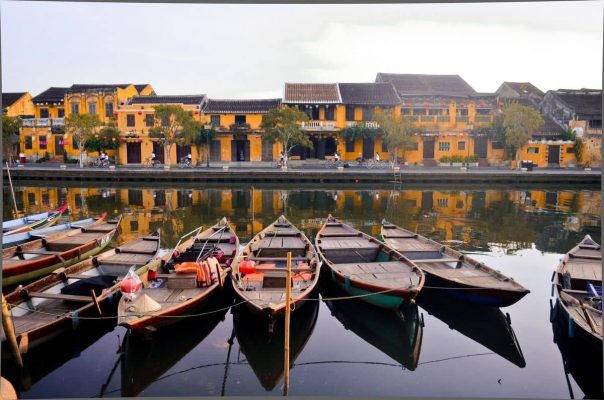
Hoi An Ancient Town – Impressive architectural heritage of the world
Hoi An Ancient Town is a meticulously preserved area that offers a unique glimpse into Vietnam’s rich cultural and historical heritage. The town is characterized by its charming narrow streets, historic buildings, and a blend of architectural styles reflecting different eras and influences, including Chinese, Japanese, and French. Walking through the Ancient Town is like stepping back in time, with its ancient houses, temples, and traditional shops.
Click here: Hoi An Tours
2. Japanese-covered bridge
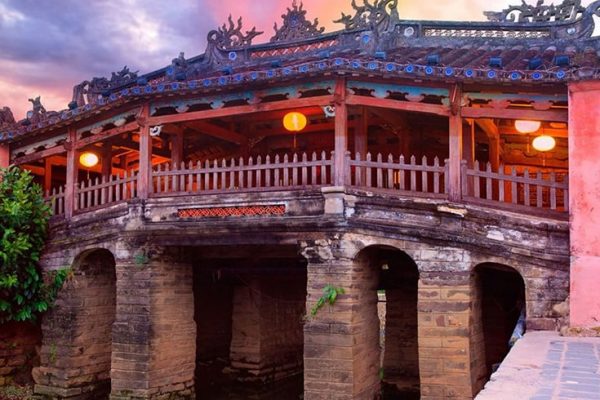
Japanese-covered bridge
The Japanese Covered Bridge is one of Hoi An’s most iconic landmarks. Built in the early 17th century, this bridge was constructed by the Japanese community living in Hoi An as a way to connect their section of town with the Chinese quarter across the stream. The exact date of its construction remains uncertain, but it is believed to have been completed in 1593.
The bridge was built at a time when Hoi An was a bustling international trading port, attracting merchants from various parts of Asia and Europe. The bridge not only served as a physical connection but also symbolized the prosperous trade relationships between the Japanese, Chinese, and local Vietnamese communities.
Start your journey with: Explore Hoi An in 1 Day
3. Phung Hung Ancient House
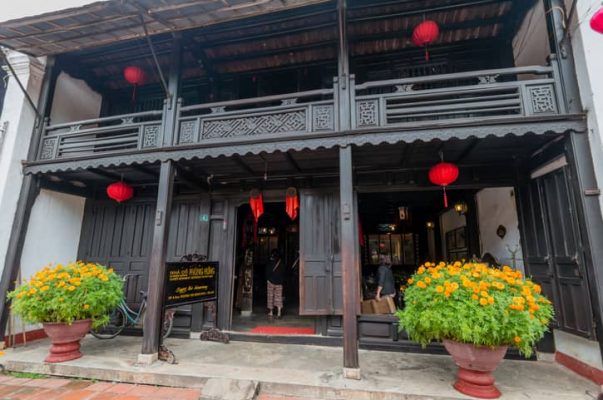
Phung Hung Ancient House
Phung Hung Ancient House, one of the most iconic heritage sites in Hoi An, is a testament to the city’s rich cultural tapestry. Built over two centuries ago, in the late 18th century, this house has witnessed the rise and fall of Hoi An as a bustling trading port. The architecture is a unique blend of Japanese, Chinese, and Vietnamese influences, reflecting Hoi An’s historical position as a melting pot of cultures.
Are you looking for: Central Vietnam Wonders Tour
4. Phuc Kien Assembly Halls
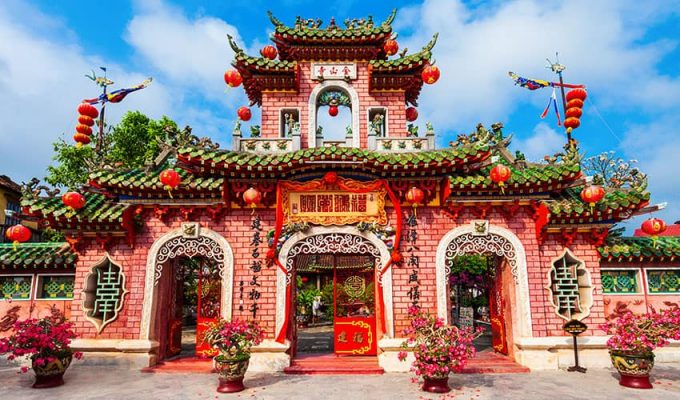
Phuc Kien Assembly Halls
The Phuc Kien Assembly Halls of Hoi An were built by Chinese immigrant communities as places of worship and social gatherings. These grand halls are ornately decorated with intricate carvings, statues, and beautiful gardens. The Phuc Kien Assembly Hall of the Fujian Chinese Congregation is particularly renowned for its stunning architecture and vibrant atmosphere.
You might also like: Da Nang to Hoi An in 4 Days
III. Top 4 Natural Attractions in Hoi An
1. Thu Bon River
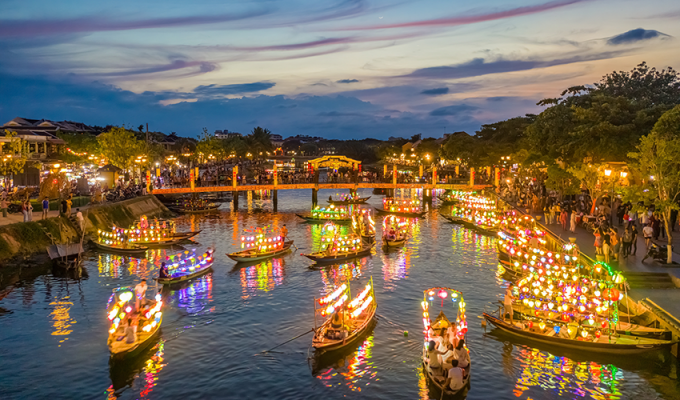
Thu Bon River
The Thu Bon River is a picturesque and historically significant waterway that flows through the heart of Hoi An, Vietnam. This scenic river has been a lifeline for the region’s inhabitants for centuries, playing a crucial role in the town’s development as a major trading port. The river’s serene beauty and tranquil ambiance make it a must-visit attraction for anyone exploring Hoi An.
Activities:
- Boat Rides: One of the most popular activities on the Thu Bon River is taking a leisurely boat ride. Local boat operators offer tours that allow visitors to experience the river’s calm waters and beautiful surroundings. These rides provide a unique perspective of Hoi An, gliding past traditional wooden houses, lush greenery, and vibrant riverfront life.
- Sunset Cruises: Sunset cruises on the Thu Bon River are particularly enchanting. As the sun dips below the horizon, the river glows with a golden hue, creating a magical atmosphere. These cruises often include traditional music performances and the opportunity to release lanterns onto the water, adding to the unforgettable experience.
- Fishing Tours: For those interested in local culture, fishing tours offer an insightful look into the traditional fishing practices of Hoi An’s residents. Participants can join local fishermen on their boats, learn about various fishing techniques, and even try their hand at catching fish using traditional methods.
Learn more about: Discover My Son Sanctuary from Hoi An and Street Food Tour
2. An Bang Beach

An Bang Beach
An Bang Beach is a pristine stretch of coastline located just a few kilometers from Hoi An’s historic old town. Known for its powdery white sand and crystal-clear waters, An Bang Beach offers a serene escape from the hustle and bustle of city life. The beach is less commercialized than some of Vietnam’s other coastal destinations, providing a more relaxed and authentic experience. With its stunning natural beauty and tranquil atmosphere, An Bang Beach is a perfect spot for both relaxation and adventure.
Activities:
- Swimming: The calm, clear waters of An Bang Beach are ideal for swimming. The gentle waves make it a safe and enjoyable spot for swimmers of all ages and skill levels. Lifeguards are often on duty during peak times to ensure safety.
- Sunbathing: Sunbathing at An Bang Beach is a blissful experience. The wide, sandy shores provide plenty of space to lay out a towel or rent a comfortable sun lounger. With plenty of sunshine year-round, it’s an ideal spot to soak up the rays and enjoy the sea breeze.
- Water Sports: For the more adventurous, An Bang Beach offers a variety of water sports. Visitors can rent equipment for activities such as paddle boarding, kayaking, and surfing. The beach’s consistent waves make it a great spot for both beginners and experienced surfers. There are also local operators who offer guided water sports activities and lessons.
3. Tra Que Vegetable Village

Tra Que Vegetable Village
Tra Que Vegetable Village is a charming and serene destination located just a few kilometers from the heart of Hoi An. This organic farming village is renowned for its lush green fields and fresh produce, which supplies many local markets and restaurants.
The village is a prime example of sustainable agriculture, with over 200 farmers cultivating a variety of vegetables using traditional methods without the use of chemical fertilizers. Tra Que’s produce, including herbs like mint, basil, and coriander, as well as leafy greens, is celebrated for its unique flavor and high quality, attributed to the fertile soil enriched by seaweed from the local river.
Activities in Tra Que Vegetable Village:
- Farm Tours: Visitors can embark on guided tours of the vegetable gardens, where they learn about the various types of vegetables grown and the traditional farming techniques used. The tours often include demonstrations of planting, watering, and harvesting.
- Cooking Classes: One of the highlights of visiting Tra Que is participating in cooking classes. Visitors get hands-on experience in preparing traditional Vietnamese dishes using fresh ingredients harvested from the gardens. Many cooking classes start with a visit to the local market, where participants select fresh produce and learn about the various herbs and vegetables used in Vietnamese cuisine.
Experience with Tra Que Vegetable Village:
- Cultural Exchange: Interacting with the local farmers is a unique and enriching experience. Visitors gain insight into the daily lives and traditions of the farming community.
- Personal Stories: Farmers often share personal stories and the history of Tra Que, providing a deeper connection to the village and its heritage.
- Hands-On Participation: Engaging in farming activities alongside the farmers offers a genuine and immersive experience, fostering a greater appreciation for the hard work involved in organic farming.
More details: Discover Central Vietnam Tour in 6 Days
4. Cham Islands

Cham Islands
The Cham Islands, also known as Cù Lao Chàm, are a cluster of eight small islands off the coast of Hoi An, Vietnam. Designated as a UNESCO World Biosphere Reserve in 2009, these islands are renowned for their pristine beauty, rich marine biodiversity, and cultural significance. The main islands in the group include Hòn Lao, Hòn Dài, Hòn Mồ, and Hòn Khô.
The Cham Islands boast stunning landscapes characterized by lush greenery, white sandy beaches, and crystal-clear turquoise waters. The marine ecosystem surrounding the islands is teeming with colorful coral reefs, diverse marine species, and vibrant underwater life, making it a paradise for snorkelers and scuba divers.
IV. Top 5 Cultural Attractions
1. Hoi An Lantern Festival

Hoi An Lantern Festival
The Hoi An Lantern Festival is a captivating monthly event that transforms the charming ancient town of Hoi An into a magical, luminous wonderland. This festival is held on the 14th day of every lunar month in celebration of the full moon, which holds great cultural and spiritual significance in Vietnam.
During the festival, the streets of the Old Town are adorned with a dazzling array of colorful lanterns, casting a warm and enchanting glow over the historic buildings, narrow alleyways, and serene riverbanks. All electric lights are turned off, allowing the lanterns to create a mesmerizing and serene atmosphere.
Visitors to the Hoi An Lantern Festival can expect a truly unforgettable experience filled with traditional music, cultural performances, and local delicacies. The main highlights include:
- Traditional Music and Performances: The festival features an array of traditional Vietnamese music and dance performances, often taking place at various historical sites and open spaces throughout the town. These performances offer a glimpse into the rich cultural heritage of Hoi An and Vietnam as a whole.
- Floating Lanterns on the River: One of the most iconic aspects of the festival is the floating lanterns on the Thu Bon River. Locals and visitors alike release small, candle-lit paper lanterns onto the river, creating a shimmering spectacle that symbolizes the release of bad luck and the hope for peace and happiness. Participating in this tradition is a memorable and spiritually uplifting experience.
- Local Food Stalls: The festival is also a culinary delight, with numerous food stalls lining the streets and markets of Hoi An. Visitors can indulge in a variety of local street food, including Cao Lau, Banh Mi (a Vietnamese baguette sandwich), and fresh seafood. The festive atmosphere is enhanced by the tantalizing aromas and flavors of these traditional dishes.
2. Hoi An Central Market

Hoi An Central Market
Hoi An Central Market stands as a vibrant hub of activity, a kaleidoscope of sights, sounds, and scents that encapsulates the essence of Vietnamese culture. This bustling market, situated in the heart of the ancient town, offers visitors a captivating glimpse into the local way of life.
3. Hoi An Tailor Shops

Hoi An Tailor Shops
Visit Hoi An tailor shops is not merely about purchasing clothing; it’s an immersive experience that showcases the fusion of tradition and modernity. Upon entering these establishments, visitors are greeted by rows of luxurious fabrics in every hue imaginable, ranging from sumptuous silks to fine linens and rich woolens.
What sets Hoi An tailor shops apart is their commitment to precision and personalized service. Every garment is meticulously measured and expertly tailored to ensure a flawless fit. Clients have the opportunity to select from an array of design options, from classic cuts to contemporary styles, with the assurance that each piece will be tailored to perfection.
4. Cooking Classes

Cooking Class in Hoi An
Immerse yourself in the vibrant culinary culture of Vietnam by participating in cooking classes offered in Hoi An. These classes provide an authentic experience, allowing you to learn the intricacies of Vietnamese cuisine from expert chefs. Whether you’re a novice or an experienced cook, these classes cater to all skill levels, ensuring an enjoyable and educational experience for everyone.
5. Hoi An Handicraft Workshop
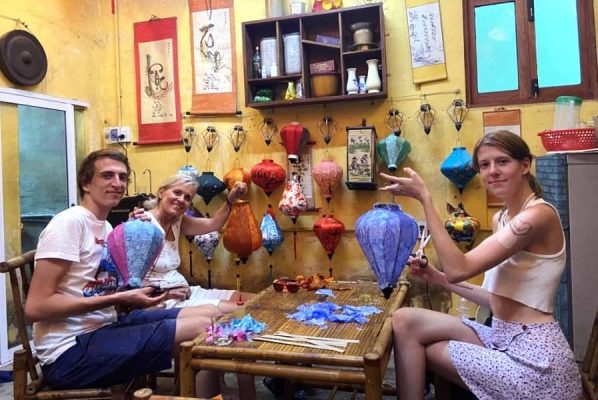
Hoi An Handicraft Workshop
Nestled in the heart of Hoi An’s ancient town, the Hoi An Handicraft Workshop is a cultural treasure trove that showcases the rich heritage and artisanal skills of the local community. This workshop is housed in a charming traditional building that exudes the historical ambiance of Hoi An. Here, visitors can witness firsthand the intricate craftsmanship that goes into creating some of Vietnam’s most beloved handicrafts.
The workshop features a diverse range of handmade products, including silk lanterns, pottery, wood carvings, and embroidery. Each piece is a testament to the skill and dedication of the artisans, who have honed their craft over generations. The Hoi An Handicraft Workshop not only offers a window into the past but also provides a vibrant space where traditional techniques are kept alive and thriving.
Learn more about: Best Things to Do in Hoi An on a Budget
V. Practical Information for Travelers
1. Best Time to Visit Hoi An
Hoi An experiences a tropical climate with two distinct seasons:
- Dry Season (February to August): During this period, the weather is generally sunny and dry, making it ideal for exploring the town and its attractions. Temperatures range from 25°C to 35°C (77°F to 95°F).
- Wet Season (September to January): This season brings heavy rainfall and occasional flooding, particularly in October and November. However, the landscape becomes lush and green, offering unique photo opportunities. Temperatures range from 22°C to 28°C (72°F to 82°F).
Click here: Best Time to Visit Hoi An-Travel Tips for Your Itinerary
2. How to Get to Hoi An
- By Air: The nearest airport is Da Nang International Airport, located approximately 30 kilometers away from Hoi An. From the airport, you can take a taxi or shuttle bus to reach Hoi An.
- By Train: Da Nang Railway Station is well-connected to major cities like Hanoi and Ho Chi Minh City. From Da Nang, you can take a taxi or bus to Hoi An.
- By Bus: Hoi An is accessible by bus from various cities in Vietnam, including Da Nang, Hue, and Nha Trang. Several bus companies operate services to and from Hoi An.
In summary, Hoi An stands as an indispensable destination for travelers seeking an authentic and enriching experience. Its allure lies not only in its picturesque landscapes and well-preserved historical sites but also in the vibrant tapestry of its cultural heritage. A visit to Hoi An promises not just a journey through history but an unforgettable experience that will leave a lasting imprint on your heart and soul. Come, discover the magic of Hoi An, and create memories that will last a lifetime.
See more: Hoi An Travel Tips



